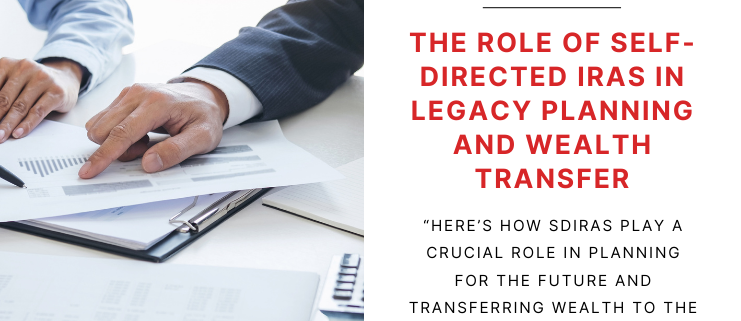The Role of Self-Directed IRAs in Legacy Planning and Wealth Transfer
Self-directed IRAs (SDIRAs) are powerful tools not just for retirement savings but also for legacy planning and wealth transfer. These investment vehicles offer the flexibility to include a broader array of assets beyond traditional stocks and bonds, such as real estate, private businesses, and more. This versatility can be leveraged to create a lasting financial legacy. Here’s how SDIRAs play a crucial role in planning for the future and transferring wealth to the next generation.
Understanding Self-Directed IRAs
Unlike conventional IRAs managed by financial institutions that limit investment choices, SDIRAs give investors the freedom to diversify their retirement portfolios with alternative assets. This autonomy not only allows for potentially higher returns but also offers strategic advantages in estate planning.
Strategic Asset Accumulation
SDIRAs enable investors to grow their estates through investments that reflect their personal expertise or interests, such as real estate or precious metals. By including these assets in an IRA, investors can benefit from the tax-advantaged growth, preserving more wealth to pass on to their heirs.
Tax Benefits and Wealth Preservation
The tax-deferred or tax-free growth (in the case of a Roth SDIRA) means that assets can accumulate without the burden of immediate taxes. This can significantly enhance the value of the estate. More importantly, this growth continues until the assets are distributed, potentially spanning across the investor’s lifetime.
Simplifying Wealth Transfer
SDIRAs can be structured to pass on to heirs smoothly and without the need for the assets to go through probate. By designating beneficiaries directly on the IRA, investors can ensure that these assets transfer directly to their loved ones swiftly and with reduced legal complexity.
Multigenerational Investment Strategies
Investors can use SDIRAs to teach heirs about investing and financial management. For instance, by involving family members in decisions about the IRA’s assets, the original account holders can impart valuable knowledge and investing experience, setting the stage for smarter financial decisions in future generations.
Considerations for Legacy Planning
- Beneficiary Designations: It’s crucial to keep beneficiary designations up to date to reflect any changes in the family dynamic, such as marriages, births, or deaths.
- Understanding Distribution Rules: Heirs must understand the rules regarding distributions from inherited IRAs, as these can affect their tax implications and investment strategies.
- Estate Taxes: While IRAs can provide tax advantages during the account holder’s lifetime, the value of the IRA is included in the estate for estate tax purposes. Proper planning is needed to address potential tax liabilities upon inheritance.
- Prohibited Transactions: Investors must be cautious about avoiding prohibited transactions, as these can lead to significant penalties and jeopardize the tax-advantaged status of the IRA.
Conclusion
Self-directed IRAs are not only vehicles for retirement savings but also potent tools for legacy planning and wealth transfer. By enabling investment in a wide range of assets, they offer unique opportunities to build and preserve wealth across generations. However, due to their complexity and the specific IRS rules that govern them, it is advisable to work with a financial advisor or an estate planning attorney to ensure that all aspects of the SDIRA contribute positively to your overall estate planning goals.
Interested in learning more about Self-Directed IRAs? Contact American IRA, LLC at 866-7500-IRA (472) for a free consultation. Download our free guides or visit us online at www.AmericanIRA.com.










